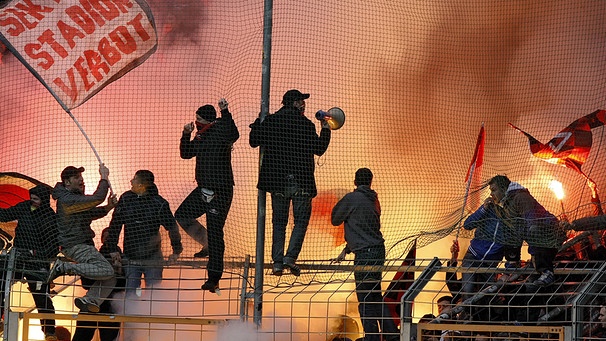
Some fans are not interested in simply enjoying the game.
The Central Sports Intelligence Unit (Zentrale Informationsstelle Sporteinsätze, ZIS) in Germany creates three categories in order to separate different fan groups based on their behaviors.
If you are interested in reading the police annual reports, you can find links to all reports under "Content-Data."
- Category A, the peaceful fans.
- Category B, fans that are prone to violence.
- Category C, fans that are violence seekers.
Most ultra-groups are considered part of the category A (“Ultragruppierungen mit choreographischen Inszenierungen fallen in der Regel in die Kategorie A.”) And the hooligans are categorized to B and C.
Data - Overlook
Data is extracted from annual reports provided by the ZIS. Click if you want to view the original data in google sheet format.
The Central Sports Intelligence Unit (the ZIS) lists the numbers of fans considered as categories B & C in their annual reports. The ZIS separates the entire league system into three main parts, Bundesliga and 2. Bundesliga, 3. Liga, and Regionalligen. From the 2006/2007 season to 2008/2009 (three consecutive seasons), ZIS did not provide data on 3. Liga, for both categories. Chart 1 presents the number of the fans that were considered as categories B & C by the ZIS. In the last twelve years, we see that both numbers went up, especially the number of category B, which means more people were involved in the hooligan activities. Although they did not seek for violence, they were certainly prone to violence. In the following parts, we will take a closer look at each category. Additionaly, as ZIS pointed out in the annual reports, more and more violent activities were conducted under the influence of both left- and rightwing political ideologies.
Data in Details I
Let's take a closer look at the fans that are categorized in the B section.
Unlike category C, fans marked as category B are often overlooked. They are not as violent-oriented as category C but they could also be the troublemakers. When they are not happy with the game result or the referees, they tend to let their anger out through the violent form. Additionally, their anger often comes out under the influence of alcohol. In the last twelve years, we see a higher growth in category B compared to C. If we want to reduce the violent behaviours in and outside of the stadiums, this is the group that needs more attention.
As the bar chart shows, most fans that are prone to violence are followers of the Bundesligas. Larger clubs who play in the higher leagues have bigger stadiums, more followers, and broader media coverage. In the 2011/12 season, the number was particularly high, with 8480 people. As previously stated, ZIS did have any data on 3. Liga from 2006/07 season to 2008/09 season, since 3. Liga started with the beginning of the 2008/09 season. In the 2007/08 season, despite the number in Bundesliga being comparatively low, the number in Regionalliga was very high (3238). Starting from the 2011/12 season, statistics shows there are more fans that are prone to violence in the regional league compared to the third tier league (except for the 15/16 season). The violent scenes happened more often in the regional leagues and this is certainly worth noticing.
Data in Details II
Category C
Compared to category B, there are less violence-seeking fans out there. However, their violent behaviors can cause serious damage to the society. For them, football offers a platform to conduct violence and they are not interested in sport itself. Being able to pick a fight with other people is the main reason they go to football games. For hooligans, fights surrounding football rivalries are a central part of the sport, or even a sport itself (Leeson et al.).
Leeson, Peter T., et al. “Hooligans*/Hooligans.” Revue d’Économie Politique; Paris, no. 2, Apr. 2012, pp. 213–31.
It is obvious that there are significantly more category C fans in the top two leagues. One of the reasons could be larger clubs such as Dortmund and Schalke 04 have more category C fans. According to the North Rhine-Westphalia police department, Schalke 04 has 165 category C fans, while Dortmund has 180. Similarly to what we have noticed in Category B fans, since the 2010/11 season, we see a consistent increased numbers of the category C fans in the regional leagues, from 557 people to 1323 people in the 2017/18 season. It means that violence has become more popular among lower league followers. Since the smaller clubs fans are closely connected to the local communities, the rise in violent fans could lead to more turbulent scenes in many communities. As ZIS mentioned in its annual reports, some of the fan activities were conducted under certain political influences, both left and right. They started to collect data on activities motivated by right-wing ideologies in 2008/09 and by left-wing ideologies in 2013/14.